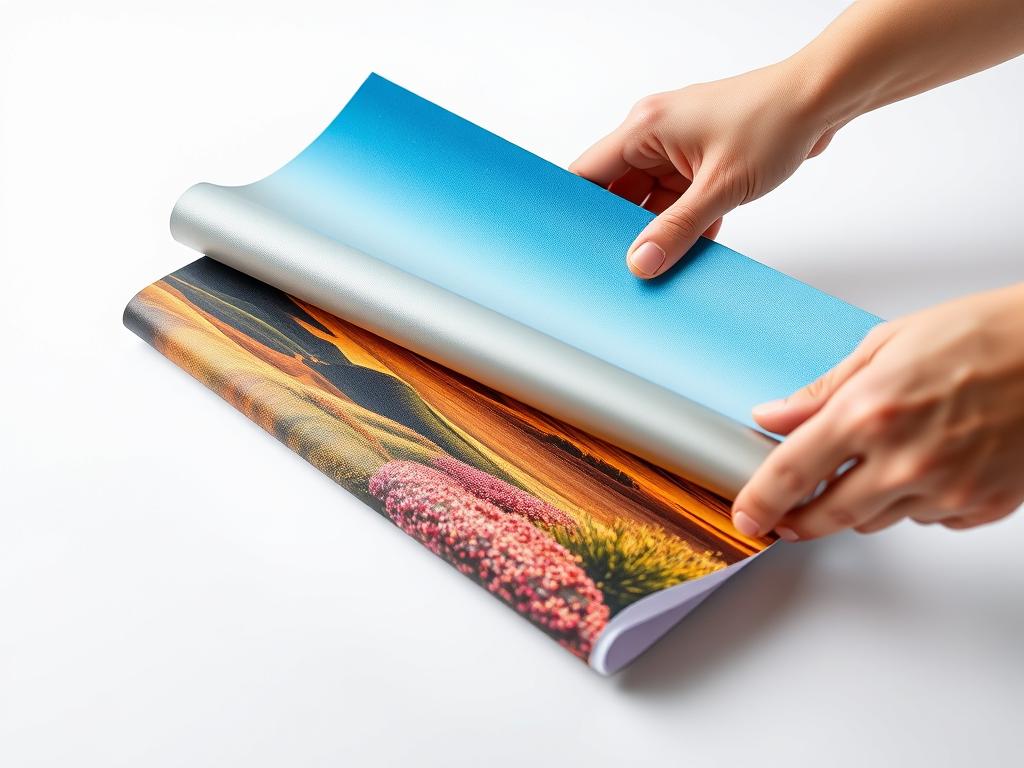Botanical Art Techniques: A Comprehensive Guide for Beginners & Experts
Botanical art is a captivating field that bridges the realms of art and science. This comprehensive guide is designed to accommodate both beginners and seasoned experts, offering insights into various botanical art techniques. With roots deeply embedded in history, botanical art continues to evolve, showcasing stunning examples of finished art that combine beauty and accuracy. This guide will explore everything from watercolor techniques to colored pencil artistry, providing a step-by-step approach to mastering the art.
What Is Botanical Art?
Definition and History of Botanical Art
Botanical art is a specialized form of art that vividly illustrates plant life with a focus on accuracy and detail. It has a rich history, with origins tracing back to ancient civilizations where it was used for documenting plant species. Over time, it has transformed into a sophisticated art form that encompasses various mediums such as watercolor, colored pencil, and pen and ink. Renowned organizations like the American Society of Botanical Artists have been pivotal in promoting this art form, ensuring its relevance and appeal to contemporary artists.
Types of Botanical Art
There are several types of botanical art, each defined by the medium used and the purpose it serves.
| Type of Botanical Art | Characteristics |
|---|---|
| Watercolor Botanical Art | Celebrated for its vibrant colors and fluidity |
| Colored Pencil Botanical Art | Offers precision and control |
| Graphite and Pen and Ink | Used for capturing intricate details |
| Printmaking and Egg Tempera | Broadens the scope for artists to experiment and express |
The diversity in techniques allows artists to choose the best fit for their style and subject matter.
The Role of Botanical Illustration in Science
Beyond its artistic appeal, botanical illustration plays a crucial role in science, providing detailed and accurate depictions of plant species. These illustrations are used in scientific publications, research, and education, helping to communicate complex botanical information clearly. The precision required in botanical illustration demands a thorough understanding of plant anatomy, making it an invaluable tool for botanists and researchers. Organizations like the New York Botanical Garden have long supported the integration of botanical art and science, emphasizing its importance in the field of botany.
Essential Materials for Botanical Art
Choosing the Right Papers: Vellum and Other Options
Selecting the right paper is fundamental in botanical art, as it can significantly impact the final outcome. Vellum is a popular choice due to its smooth surface and durability, ideal for detailed work. However, there are other options like hot-pressed watercolor paper, which provides a smooth finish suitable for watercolor and ink. The choice of paper often depends on the medium and technique employed, with artists often experimenting to find the best fit for their specific project.
Watercolor Supplies for Beginners
For those venturing into watercolor botanical art, having the right supplies is essential. Beginners should invest in high-quality watercolor paints that offer rich pigmentation and blend effortlessly. Brushes with fine tips are crucial for precision, allowing artists to capture the delicate details of plant structures.
| Essential Supplies | Purpose |
|---|---|
| Watercolor Paints | Rich pigmentation and easy blending |
| Brushes with Fine Tips | Precision in capturing delicate details |
A comprehensive guide to watercolor supplies will typically include a palette, mixing tray, and masking fluid, providing beginners with all they need to embark on their botanical journey.
Colored Pencil and Graphite Essentials
Colored pencils and graphite are staples in botanical art, known for their versatility and ease of use. High-quality colored pencils deliver vibrant colors and can be layered to create depth and texture. Graphite pencils, ranging from soft to hard, are ideal for sketching and adding intricate details. Artists often combine these materials to achieve a balance of color and detail, making them essential tools in any botanical artist's kit.
Core Techniques Used in Botanical Art
Watercolor Techniques for Realistic Effects
Watercolor is a favored medium in botanical art for its ability to convey the vibrant and translucent qualities of plant life. Artists employ a variety of techniques, such as wet-on-wet and glazing, to achieve realistic effects. These methods allow for the delicate blending of colors, capturing the nuanced tones found in nature. A comprehensive guide to watercolor techniques will often include step-by-step instructions, illustrating how to layer colors effectively to create depth and dimension. Mastering these techniques can transform a simple drawing into a stunning example of finished art, showcasing the artist's skill and attention to detail.
Colored Pencil Techniques for Depth and Detail
Colored pencils are celebrated for their precision and control, making them ideal for botanical art where detail is paramount. Techniques such as layering, burnishing, and stippling allow artists to build up color intensity and create intricate textures. A comprehensive guide to colored pencil techniques often highlights the importance of understanding color theory and composition, enabling artists to render realistic botanical illustrations. By utilizing a range of colors and varying pressure, artists can achieve a rich depth that brings their botanical drawings to life.
Pen & Ink Techniques for Botanical Illustration
Pen and ink is a classic medium in botanical illustration, known for its ability to capture fine detail and contrast. Techniques such as cross-hatching, stippling, and line variation are employed to create texture and shading. These methods require a steady hand and patience, as the precision of ink demands meticulous attention to each stroke. A comprehensive guide to pen and ink techniques will often include tips on selecting the right tools and mastering the balance between light and shadow, ensuring that the final illustration is both accurate and visually captivating.
Step-by-Step Guide to Creating Botanical Illustrations
Sketching and Composition Basics
Creating a successful botanical illustration begins with a well-thought-out sketch and composition. Artists start by observing their subject closely, making preliminary sketches to capture the plant's proportions and details. Composition involves arranging elements in a way that is both aesthetically pleasing and scientifically accurate. A comprehensive guide to sketching and composition will often provide examples and tutorials, helping artists understand how to balance elements and focus on key features of the plant to be depicted.
Layering Colors in Watercolor
Layering is a fundamental technique in watercolor botanical art, used to build up color gradually and create a sense of depth. Artists apply thin washes of color, allowing each layer to dry before adding the next. This method enhances the vibrancy and richness of the final piece. A comprehensive guide to watercolor layering often includes instructional books and tutorials, offering insights into how to effectively blend and glaze colors to achieve a realistic portrayal of plant life.
Finishing Touches: Using Egg Tempera and Printmaking
Egg tempera and printmaking are specialized techniques that add unique textures and finishes to botanical illustrations. Egg tempera offers a luminous quality, allowing artists to achieve fine detail and vibrant hues. Printmaking techniques, such as etching and lithography, provide opportunities for artists to explore different textures and reproduce their work. A comprehensive guide will cover these techniques, offering step-by-step instructions and highlighting their application in botanical art, thus expanding the artist's repertoire and creative expression.
Common Mistakes to Avoid in Botanical Art
Overworking the Paper
One common mistake in botanical art is overworking the paper, which can lead to damage and a muddy appearance. Artists must learn to recognize when a piece is complete and avoid excessive layering or erasing that can wear down the paper's surface. A comprehensive guide will provide tips on how to maintain the integrity of the paper, ensuring that the final artwork remains crisp and vibrant.
Neglecting Composition Principles
Ignoring composition principles can result in a disorganized and unbalanced artwork. Artists should pay attention to the arrangement of elements, ensuring that the composition guides the viewer's eye and highlights the plant's key features. A comprehensive guide often includes tutorials and examples of successful compositions, helping artists understand how to create harmonious and engaging botanical illustrations.
Using Poor Quality Materials
The use of poor-quality materials can significantly affect the outcome of a botanical illustration. Inferior paints, pencils, and paper may not perform well, leading to faded colors and lack of detail. Investing in high-quality materials is crucial for achieving the best results. Guides and tutorials often emphasize the importance of selecting the right tools, providing recommendations for artists to ensure their work is both durable and beautiful.
Tips from Botanical Art Experts
Insights from Notable Botanical Artists
Notable botanical artists have significantly shaped the field of botanical art, offering invaluable insights into its techniques and nuances. Their expertise often highlights the importance of precision and patience, two key attributes for creating stunning examples of finished art. These artists emphasize the role of observation and detail in capturing the essence of botanical subjects, which can elevate a piece from amateur to professional quality. Engaging with their work and advice can inspire and guide aspiring artists in their journey.
Recommended Practices for Improvement
To excel in botanical art, artists should regularly practice and refine their skills. Experts recommend focusing on mastering major techniques such as watercolor, colored pencil, and pen and ink, each offering unique opportunities to illustrate the beauty of plants. Participating in workshops and engaging with communities like the American Society of Botanical Artists can provide critical feedback and foster growth. Aspiring artists can also benefit from studying comprehensive guides and tutorials, which offer step-by-step instructions and insights into every major technique of botanical artistry.
Carol Woodin's Advice on Botanical Art Techniques
Carol Woodin, a renowned botanical artist, offers valuable advice on mastering botanical art techniques. Her guidance often emphasizes the importance of using high-quality materials, such as vellum and premium paints, to achieve the best results. Woodin's work, filled with more than 900 photographs and stunning examples, serves as a definitive guide for artists, showcasing how to blend traditional methods with modern approaches. Her insights encourage artists to explore various mediums and techniques, continually pushing the boundaries of their artistic expression.
Recommended Tools and Instruction Books
Top Instruction Books on Botanical Art
Instruction books on botanical art are vital resources for both beginners and experienced artists. These comprehensive guides often cover the gamut of techniques, providing detailed explanations and visual examples. Books like those by the American Society of Botanical Artists and other experts offer step-by-step instructions on watercolor, colored pencil, and pen and ink techniques, making them essential for anyone looking to improve their botanical drawing skills. These resources are filled with more than just techniques; they inspire creativity and precision in botanical illustration.
Must-Have Tools for Aspiring Botanical Artists
For those embarking on a botanical art journey, having the right tools is crucial. High-quality watercolor paints, colored pencils, and graphite are fundamental for creating detailed and vibrant illustrations. Brushes with fine tips, vellum, and hot-pressed paper are recommended for achieving intricate details.
| Tool | Purpose |
|---|---|
| Masking Fluid | Enhances the painting process by allowing for more control and precision. |
| Mixing Trays | Helps in managing and mixing colors. |
Investing in these tools ensures that artists are well-equipped to produce beautiful art that captures the essence of botanical subjects.
Online Resources for Further Learning
The internet is a treasure trove of tutorials and resources for botanical art enthusiasts. Online platforms offer how-to videos and workshops that cover every major technique of botanical artistry, from watercolor painting to printmaking. Websites like the New York Botanical Garden provide access to botanical art and illustration certificate programs, offering structured learning paths. Engaging with online communities and forums can also provide support and feedback, helping artists refine their skills and expand their knowledge.
Final Thoughts: Start Your Botanical Art Journey Today
Setting Goals for Your Botanical Art Practice
Setting clear goals is essential for progressing in botanical art. Whether focusing on mastering a specific medium or completing a series of illustrations, having a structured plan can guide your practice and track your progress. Goals should be realistic yet challenging, encouraging continuous improvement and exploration of new techniques. By establishing a roadmap, artists can remain motivated and focused on achieving their artistic aspirations.
Finding Your Unique Style in Botanical Art
Developing a unique style is a journey that requires experimentation and self-reflection. Artists should explore various techniques and mediums, such as watercolor, colored pencil, and pen and ink, to determine what resonates most with their artistic vision. Embracing personal preferences and influences can lead to a distinctive style that sets one's work apart. Engaging with diverse artistic communities and studying the works of established botanical artists can provide inspiration and guidance in this creative pursuit.
Community and Support for Botanical Artists
Joining a community of botanical artists can provide invaluable support and encouragement. Organizations like the American Society of Botanical Artists offer networking opportunities, workshops, and exhibitions that foster collaboration and growth. Engaging with peers allows for the exchange of ideas and constructive feedback, vital for artistic development. Whether through local art groups or online forums, finding a supportive community can enhance your botanical art journey, providing both guidance and inspiration.
Enhance Your Space with Unique Modern Masterpieces
Are you inspired by the innovative mediums and conceptual depth highlighted in our exploration of contemporary art? You’re not alone! Today’s art enthusiasts are seeking cultural relevance and emotional connections in their artwork. However, finding pieces that resonate with modern themes and fit your unique style can be a challenge. That’s where we come in!
At Rossetti Art, we specialize in canvas prints, original paintings, and modern sculptures that celebrate the spirit of now. Each piece created by Chiara Rossetti brings a personal touch that connects deeply with current social narratives—just like the modern masterpieces discussed in the article. Don’t miss out on the chance to elevate your home decor with breathtaking artwork that speaks to your values and aesthetic. Explore our collection today and find your perfect piece! Act now, and transform your space into a gallery of inspiration
FAQ on Botanical Art Techniques
What are botanical art techniques?
Botanical art techniques refer to the various methods used to create detailed and accurate representations of plants. These techniques include drawing, painting, and illustration, utilizing mediums such as watercolor, colored pencil, graphite, pen and ink, and egg tempera.
Who are the experts in botanical art?
Experts at the American Society of Botanical Artists (ASBA), including renowned artists like Carol Woodin and Diane Bouchier, contribute to the field by sharing their knowledge through instructional books and how-to tutorials.
What mediums can I use for botanical art?
Botanical artists often use a variety of mediums such as watercolor, colored pencil, acrylic, and pencil. Each medium offers unique qualities that can enhance the beauty of botanical illustrations.
Are there any comprehensive guides available?
Yes, there are comprehensive guides available, including instruction books filled with more than 900 photographs and stunning examples of finished art. These guides cover every major technique of botanical artistry.
What is a botanical illustration?
A botanical illustration is a detailed, accurate depiction of a plant, often created using specialized techniques. It serves both artistic and scientific purposes, showcasing the beauty of plants while providing essential information.
Can beginners learn botanical art techniques?
Absolutely! Many instructional books and how-to tutorials are designed to take students from beginner to advanced levels, covering the gamut of techniques used in botanical art.
What is the significance of the New York Botanical Garden in botanical art?
The New York Botanical Garden plays a crucial role in promoting botanical art and illustration through various programs, including the Botanical Art and Illustration Certificate, which provides comprehensive training in botanical art techniques.
What resources does ASBA offer for botanical artists?
The ASBA offers a variety of resources, including instructional books, how-to tutorials, and workshops that cover every major technique in botanical art. They also provide a platform for creative people everywhere to showcase their work.
What are some major techniques used in botanical art?
Some major techniques include watercolor painting, colored pencil rendering, graphite drawing, and printmaking. Each technique has its own unique approach and can be explored through detailed tutorials and instructional materials.




Leave a comment
This site is protected by hCaptcha and the hCaptcha Privacy Policy and Terms of Service apply.